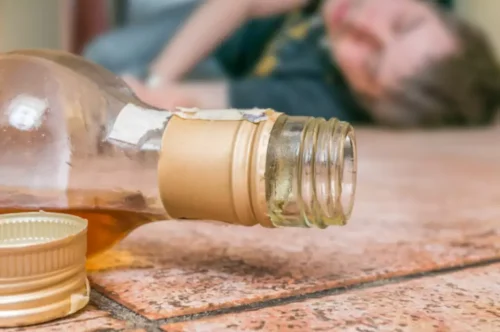
It’s possible that if you use them together, antibiotics may be less effective at clearing Alcohol and Pills up the infection that you are being treated for.
- Older adults are at particular risk for interactions between alcohol and prescription medications.
- Angina (ischemic chest pain) is caused by reduced blood flow to the heart.
- Given the variety and complexity of observed interactions between alcohol and numerous medications, it is difficult to recommend an alcohol consumption level that can be considered safe when taking medications.
- Her A1C (which is a blood test that measures blood sugar over a three-month period) is now in the healthy range.
- If these research findings also apply to humans, alcohol elimination may be delayed in people taking certain antibiotics that are active against colonic bacteria.
Upgrade your nursing career in Alcohol and Other Drugs Nursing

Reflect and think critically to be better able to care for self, improve health outcomes, and influence safe and effective professional practice. Engage in behaviour that is culturally appropriate, safe and sensitive to the needs of people in their care. Applicants for the Graduate Certificate in Alcohol and Other Drugs Nursing must have at least one years’ work experience in alcohol and other drug nursing or a related field. In Tuesday’s update, the department said it does not appear fentanyl was involved. The five students who were sickened “consumed an extreme amount of alcohol and some had consumed drugs, which led to them become violently ill,” police said. Police initially reported that at least six men were sick or overdosed Saturday night after consuming “a possibly tainted batch of cocaine at a party,” Drug rehabilitation and that alcohol also was involved.
Which drugs should you not mix alcohol with?
- Some research has found that alcohol does not appear to worsen liver inflammation in certain people who take medication for their cholesterol.
- Utilizing a large database of over 1,300 medications, they found that 45% of these medications had the potential to interact with alcohol.
- This acceleration of alcohol elimination probably does not have any adverse effect.
- Alcohol and medication can have a harmful interaction even if they’re taken at different times.
- Like barbiturates, benzodiazepines (BZDs) are classified as sedative-hypnotic agents and act through the same brain molecules as do barbiturates.
There are many different types of enzymes with different names, indicated by letters and numbers. After nicotine, alcohol is the most commonly abused drug in our society. As reported by the National Institute on Alcohol Abuse and Alcoholism (NIAAA), a report showed that annually there were over 78,000 liver disease deaths among individuals ages 12 and older, and 47% involved alcohol. Add excessive use of alcohol to the regular use of a medication that is hard on the liver, and the potential for harm can soar.
- While the research is ongoing, Leggio points to medications such as naltrexone, that the FDA has already approved to treat alcohol use disorder.
- In general, probably only a small fraction (perhaps 10 percent) of ingested alcohol is eliminated from the body by first-pass metabolism after consumption of low doses of alcohol.
- If you are not sure if you can safely drink alcohol while taking a certain medication, read the label carefully and consult with a pharmacist or doctor.
- In addition, no serious interactions appear to occur when these agents are consumed with moderate alcohol doses (Matilla 1990).
- Accordingly, people taking MAO inhibitors should be warned against drinking red wine.
Allergy & cold medications

Alcohol and medication can have a harmful interaction even if they’re taken at different times. It’s important to understand the very real possibility of a reaction. If you or a loved one struggles with polysubstance misuse or addiction, help is available. American Addiction Centers’ (AAC) treatment facilities offer several options for treatment to fit your needs. More resources for a variety of healthcare professionals can be found in the Additional Links for Patient Care.
Alcohol and other drug use

In general, alcohol use has the potential to make symptoms of a mental health condition worse. =https://ecosoberhouse.com/ In addition, there are hundreds of mental health medications that interact with alcohol. Combining alcohol with a mental health medication can make the medication less effective or even more dangerous. In some cases, mixing alcohol with medications can lead to an overdose or alcohol poisoning—both of which are potentially life-threatening medical emergencies. When you mix alcohol with medicines, whether prescription or over-the-counter, the medicines can increase the effects of the alcohol or the alcohol can increase the side-effects of the drug. Is it bad to have a drink from time to time if you have chronic pain?

Even some herbal remedies can have harmful effects when combined with alcohol. Combining alcohol with medications used to treat hypertension (high blood pressure) can cause dizziness, fainting, drowsiness, and arrhythmia (irregular heartbeat). As with cold and flu remedies, combining alcohol with medications used to treat a cough can cause drowsiness, dizziness, and motor impairment. The effects of the mix can be especially serious—if not deadly—when the cough medicine also contains alcohol. If you have a medical condition (such as atrial fibrillation) that puts you at risk for developing a blood clot, your doctor might prescribe anticoagulant medications to “thin” your blood.
- ” I think this is an extension of this reward based biology that we see that these drugs are affecting,” he says.
- Of these, about 51% are current regular drinkers (defined as at least 12 drinks in the past year), and about 13% are infrequent drinkers (defined as up to 11 drinks in the past year).
- Alcohol and medicines can interact harmfully even if they are not taken at the same time.
- Warfarin is a commonly used medication to prevent blood clots, sold under the name Coumadin.
- This resource can help identify medications metabolized by CYP2E1 that may potentially interact with alcohol.
How Alcohol Interacts With Painkillers
If you’re on MAOIs, it’s especially important that you avoid red wine and beer. These beverages contain a byproduct that when consumed with MAOIs can increase the risk of high blood pressure. Although most drugs are safe and effective when used as directed, it’s important to read warning labels on all medications.
If you have an injury or medical condition that causes pain or spasms in your muscles, you might be given medications to relax them. Muscle relaxants are commonly used to treat back and neck pain, as well as certain kinds of headaches. You might not need to completely avoid alcohol if you are taking a blood thinner. The American Heart Association (AHA) recommends limiting your intake to no more than one or two occasional drinks if you are on anticoagulant therapy. Angina (ischemic chest pain) is caused by reduced blood flow to the heart.